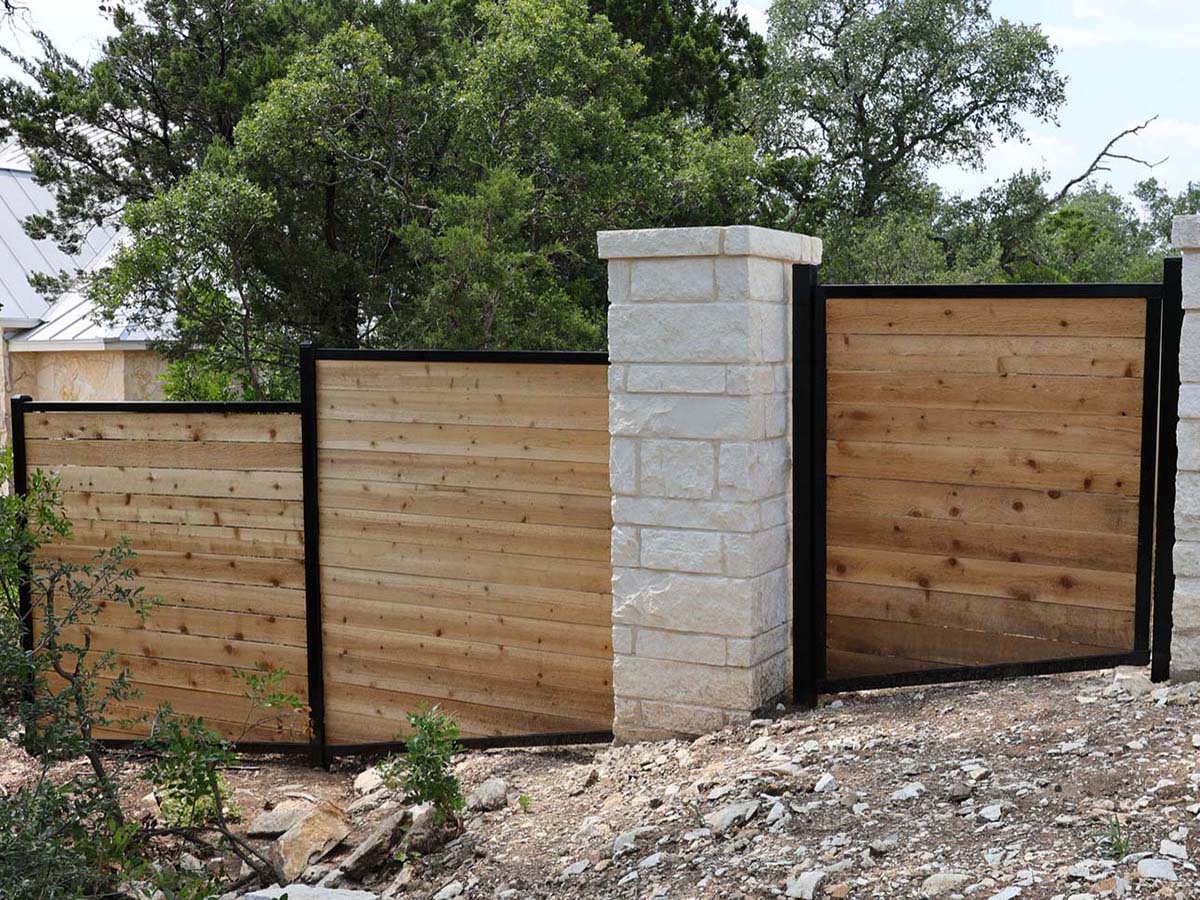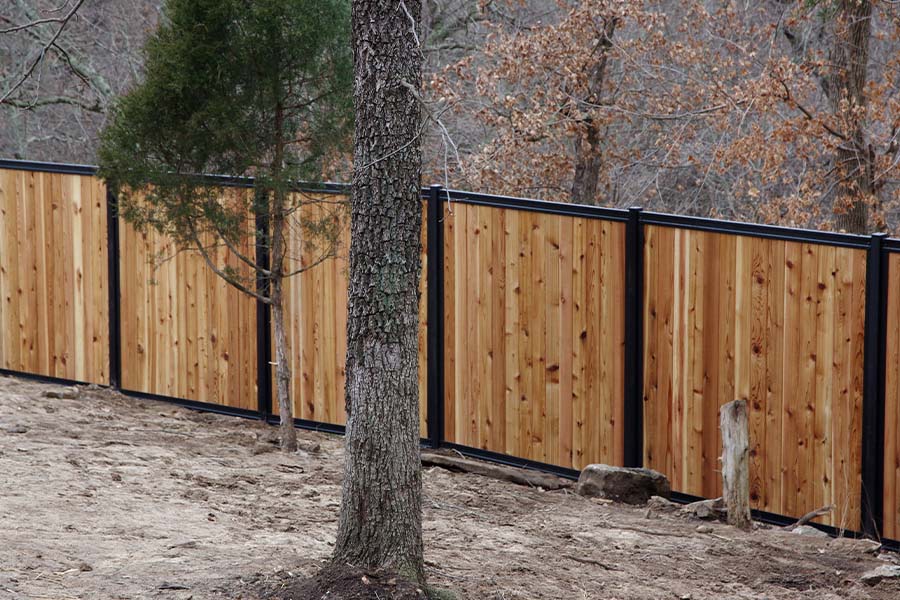All Categories
Featured
When it comes to preserving a wooden fencing, property owners frequently deal with the decision of whether to repaint or stain. Both options have their pros and cons, and the selection ultimately depends upon your aesthetic choices, the kind of timber, and just how much upkeep you agree to devote to. Right here's a detailed comparison to assist you make an informed decision.
The Fundamentals of Paint and Discoloration
Paint entails covering the wood with a nontransparent layer of shade. It provides total insurance coverage, concealing the wood grain while using outstanding defense versus ecological aspects.
Discoloring permeates the timber, boosting its all-natural elegance while adding a safety layer. Relying on the kind, discolorations can range from transparent to strong, allowing differing degrees of wood grain visibility.
Advantages And Disadvantages of Paint
Pros:
Wide Variety of Colors: Paint deals unlimited shade alternatives, allowing you to match your fencing to your home's outside or individual style.
Longer Long-term: Top notch outside paint can last approximately 5-7 years, requiring much less constant reapplication.
Superior Security: Paint kinds a thick, strong barrier against moisture, UV rays, and bugs.
Disadvantages:
Cracking and peeling: In time, paint can fracture or peel off, especially in locations with extreme weather.
Hides Natural Wood Charm: If you love the natural grain of timber, paint might not be the most effective selection.
Higher Maintenance: Repainting needs removing the old paint, which can be labor-intensive.
![]()
Benefits And Drawbacks of Staining
Pros:
All-natural Look: Discolorations preserve and improve the all-natural charm of the timber, making it excellent for high-grade timber like cedar or redwood.
Easier to Reapply: Unlike paint, spots do not crack or peel. Reapplying discolor commonly requires much less surface area prep work.
Flexible Complete Options: Discolorations can be found in transparent, semi-transparent, and solid varieties, providing various degrees of protection.
Cons:
![]()
Much Shorter Life Expectancy: Stains, specifically clear and semi-transparent ones, might need reapplication every 2-3 years.
Minimal Shade Choices: While spots supply natural tones, they lack the broad color palette readily available with paint.
Less Protective: Spots permeate the wood yet do not supply as thick a barrier as paint, making them somewhat much less protective versus severe weather condition.
Aspects to Take Into Consideration
Visual Preferences: If you want lively shades and complete coverage, paint is the means to go. For a all-natural and rustic appearance, go with tarnish.
Wood Kind: Top notch woods with gorgeous grains gain from staining, while lower-grade woods can be repainted for a polished appearance.
![]()
Environment: In humid or wet climates, paint's thicker obstacle might supply much better protection. In moderate or dry environments, stains can be adequate.
Upkeep Commitment: Painting includes much less constant reapplication however even more initiative throughout touch-ups. Staining calls for routine upkeep yet is simpler to manage.
Last Thoughts
Both paint and discoloration can efficiently secure and improve your wood fencing. The very best option relies on your top priorities, whether they lean towards visual appeals, resilience, or convenience of upkeep. By recognizing the advantages and drawbacks of each, you can choose the finish that lines up with your requirements and guarantees your fence continues to be a standout function of your property for several years to come.
The Fundamentals of Paint and Discoloration
Paint entails covering the wood with a nontransparent layer of shade. It provides total insurance coverage, concealing the wood grain while using outstanding defense versus ecological aspects.
Discoloring permeates the timber, boosting its all-natural elegance while adding a safety layer. Relying on the kind, discolorations can range from transparent to strong, allowing differing degrees of wood grain visibility.
Advantages And Disadvantages of Paint
Pros:
Wide Variety of Colors: Paint deals unlimited shade alternatives, allowing you to match your fencing to your home's outside or individual style.
Longer Long-term: Top notch outside paint can last approximately 5-7 years, requiring much less constant reapplication.
Superior Security: Paint kinds a thick, strong barrier against moisture, UV rays, and bugs.
Disadvantages:
Cracking and peeling: In time, paint can fracture or peel off, especially in locations with extreme weather.
Hides Natural Wood Charm: If you love the natural grain of timber, paint might not be the most effective selection.
Higher Maintenance: Repainting needs removing the old paint, which can be labor-intensive.

Benefits And Drawbacks of Staining
Pros:
All-natural Look: Discolorations preserve and improve the all-natural charm of the timber, making it excellent for high-grade timber like cedar or redwood.
Easier to Reapply: Unlike paint, spots do not crack or peel. Reapplying discolor commonly requires much less surface area prep work.
Flexible Complete Options: Discolorations can be found in transparent, semi-transparent, and solid varieties, providing various degrees of protection.
Cons:

Much Shorter Life Expectancy: Stains, specifically clear and semi-transparent ones, might need reapplication every 2-3 years.
Minimal Shade Choices: While spots supply natural tones, they lack the broad color palette readily available with paint.
Less Protective: Spots permeate the wood yet do not supply as thick a barrier as paint, making them somewhat much less protective versus severe weather condition.
Aspects to Take Into Consideration
Visual Preferences: If you want lively shades and complete coverage, paint is the means to go. For a all-natural and rustic appearance, go with tarnish.
Wood Kind: Top notch woods with gorgeous grains gain from staining, while lower-grade woods can be repainted for a polished appearance.

Environment: In humid or wet climates, paint's thicker obstacle might supply much better protection. In moderate or dry environments, stains can be adequate.
Upkeep Commitment: Painting includes much less constant reapplication however even more initiative throughout touch-ups. Staining calls for routine upkeep yet is simpler to manage.
Last Thoughts
Both paint and discoloration can efficiently secure and improve your wood fencing. The very best option relies on your top priorities, whether they lean towards visual appeals, resilience, or convenience of upkeep. By recognizing the advantages and drawbacks of each, you can choose the finish that lines up with your requirements and guarantees your fence continues to be a standout function of your property for several years to come.
Latest Posts
Drive the Best with Sherman Dodge
Published Jan 19, 25
2 min read
How Does the Store Handle Furnishings Delivery and Assembly Solutions?
Published Jan 19, 25
0 min read
A-Abel Roofing: Your Tinley Park Roofing Specialists
Published Jan 19, 25
1 min read